A Winter Excursion to Scotland’s Wild Orkney Islands
Olivia Gee befriends charming island Scots, soaks up Neolithic history at Skara Brae, and explores the sweeping moorlands of Hoy.
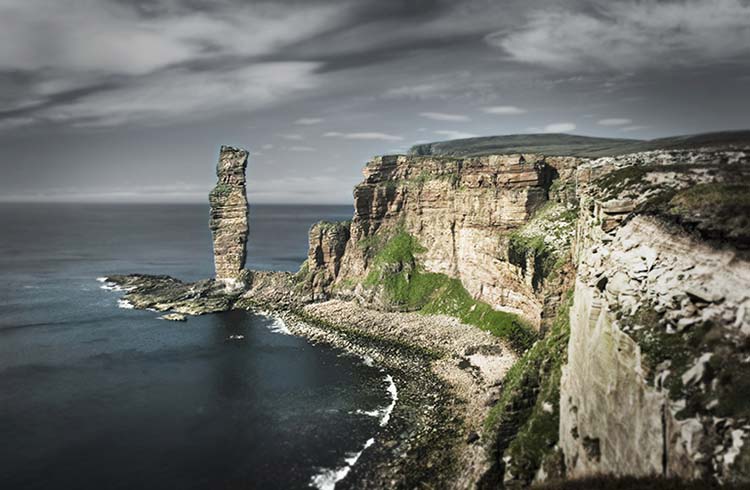 Photo © Getty Images / Alan Majchrowicz
Photo © Getty Images / Alan Majchrowicz
- A windy welcome to Stromness
- A dose of history in Skara Brae
- Hiking and hoofed friends on Hoy
- Trip Notes
In terms of ice-clad ruggedness, the Northern Isles of Scotland are the stuff of legend. The first cliffs you meet in this series of windswept settlements belong to Orkney, about 10mi (16km) off the northeast coast of Scotland. This glorious archipelago has an intriguing history and spectacular vistas to rival any imaginary kingdom of lore.
I’m venturing to this chilly paradise with a ragtag group of friends and former Orkney locals in the depths of winter, having just left behind a sparkling London Christmas and a wild Edinburgh New Year’s Eve. As we’re buffeted across the strait on the 90-minute ferry crossing from Scrabster, the charm of secluded village life and the appeal of more remote adventures on the windy moors grows stronger.
A windy welcome to Stromness
There’s a romanticism to haphazardly cobbled streets, twisting and turning to undiscovered fates. But that charm quickly diminishes when we try to navigate our rented minivan along the narrow lanes that pass for main roads here. Nonetheless, Stromness on Mainland Orkney is as endearingly Scottish as expected, with 95mph (152kph) wind gusts that can almost keep a limp body standing, and winding stone staircases leading to cozy, wood-paneled pubs.
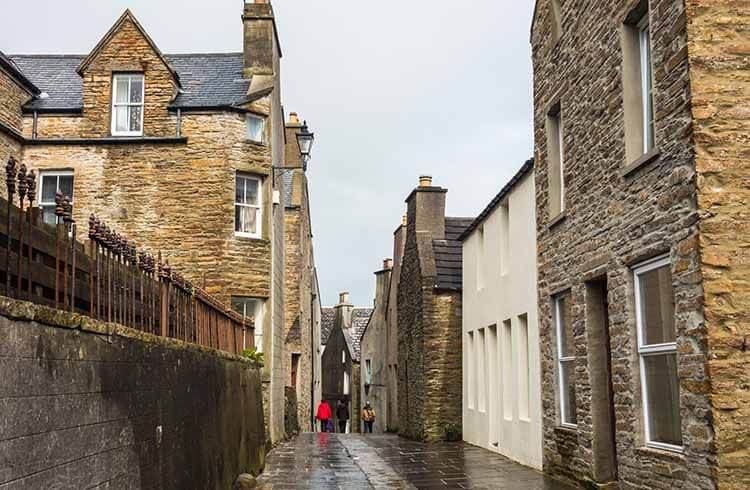
The town’s star is undoubtedly Gunner, a rowdy local we meet in the Royal Hotel Stromness. While I’m not entirely sure if that’s his real name (our conversation is fueled by beer), he did demonstrate that he can down a pint of Guinness in four seconds. Despite the loss of an eye, a foot, and a testicle to diabetes, he has a magnetic personality, and makes our group feel like part of the tiny pub party as we feast on pot pies and bangers and mash. It’s a cracking first night.
A dose of history in Skara Brae
Luckily for our waistlines, there’s plenty more to Orkney than a hearty meal. Long before Mount Vesuvius erupted and froze Pompeii in time, and even earlier than the mysterious construction of Stonehenge, the Neolithic settlement of Skara Brae was built on the west coast of Mainland.
On our visit to the World Heritage site, perched on the Bay of Skaill, we’re pulled through 5,000 years of history to meet the people who lived in the cluster of eight stone houses, sunk into the earth for protection against Orkney’s harsh elements. It’s an otherworldly experience strolling around the village, imagining the architects behind the magnificently preserved dwellings full of stone cupboards and seats, especially with only a few other travelers braving the winter wind to witness history.

Lunch calls us to nearby Kirkwall, Orkney’s largest town, where we stumble upon more modern cultural artefacts. Wooden slats are nailed over the town’s windows and shopfronts – an ex-Orkney resident in our group explains this is remnants of The Ba’. This mass football game, which is thought to have originated in Orkney at least 300 years ago, sees households and shop owners barricade their doors and windows in preparation for the rambunctious, town-wide affair, still played throughout the city streets and alleys every Christmas Eve and New Year’s Eve.
While we only gaze at the aftermath, more timely visitors can watch the giant rugby scrum of family-based factions – the Uppies and Doonies – rough and tumble to retrieve the cork-filled leather ba’ and race it to their respective goals at the south end of town and, shockingly, into the freezing water of Kirkwall Bay.
Hiking and hoofed friends on Hoy
Our final Orkney excursion is a day trip to Hoy. In classic Scot style, we arrive on the island in morning darkness and drizzle. Our stern ferry captain yells through the sleet that he won’t be returning to this port – we’ll have to trudge over 13mi (21km) south to a more sheltered bay if we hope to meet the return ferry to Stromness in the evening. But as stubborn amateur hikers with (currently) dry socks, we’re adamant we’ll make it there after walking our intended route to the remote hamlet of Rackwick, where we planned to cook sausages like grizzled adventurers in the postcard-perfect bothy (a stone hut freely open to the public).
We certainly aren’t disappointed by the journey there. The island is spectacularly varied, with mountainous moorlands butting up against craggy ocean cliffs that present climbing challenges for more seasoned explorers. But thanks to the gloomy weather, the only souls we encounter are spirited Shetland ponies roaming freely in the grass fields.
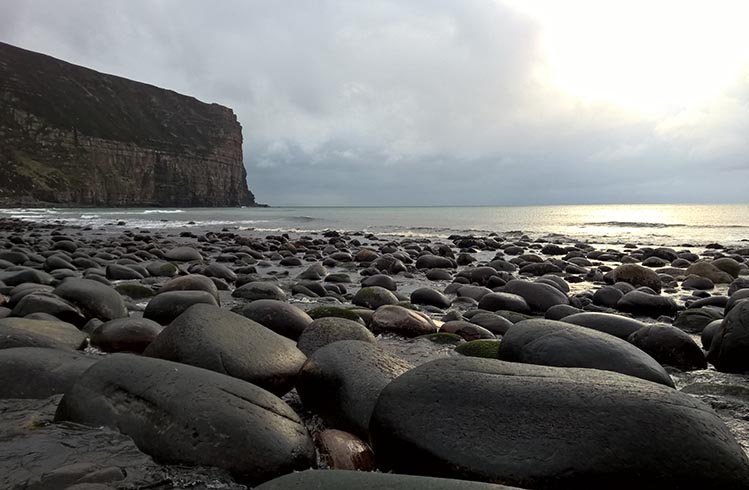
Despite sinking into knee-deep puddles and getting creative with a pocketknife to enter the bothy (always check opening hours in the off season), we complete the 5mi (8km) trek. But it wouldn’t be Orkney without a proper test by fearsome Viking weather gods: the storm rolls in at full force while we broil our sausages over the fireplace.
I’m bracing myself for a freezing night’s sleep on a stone pallet when one of our crew spots headlights. Praise Odin! Our savior, who we learn is named Philip, and his dog Maxwell, just so happen to be heading for the ferry back to Stromness after working on their holiday home which, like most residences this side of the island, is unoccupied in the dead of winter. We bundle into the truck, perched on a stack of firewood, and make it safely back to the village. Cheers to our new mate Phil.
Trip notes
- Ferries to Orkney depart from Scrabster and Gills Bay in the north, and Aberdeen further south. Renting a car will help reduce weather-related delays, but the journey and some travel around the archipelago is doable via public transport.
- In the darkest days of winter, sunrise is at around 8am, and the glow settles into night before 5pm, with an average maximum January temperature of 43°F (6°C). Plan your movements and clothing layers carefully.
- Accommodation on Orkney is well-worn but well-loved. You’ll likely be staying in rented cottages, B&Bs, and hotel rooms above pubs, rather than swish modern digs.
Related articles
Simple and flexible travel insurance
You can buy at home or while traveling, and claim online from anywhere in the world. With 150+ adventure activities covered and 24/7 emergency assistance.
Get a quote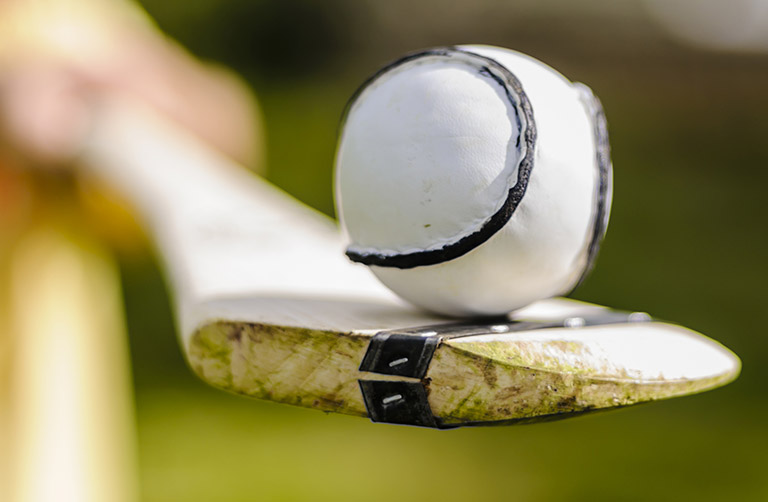
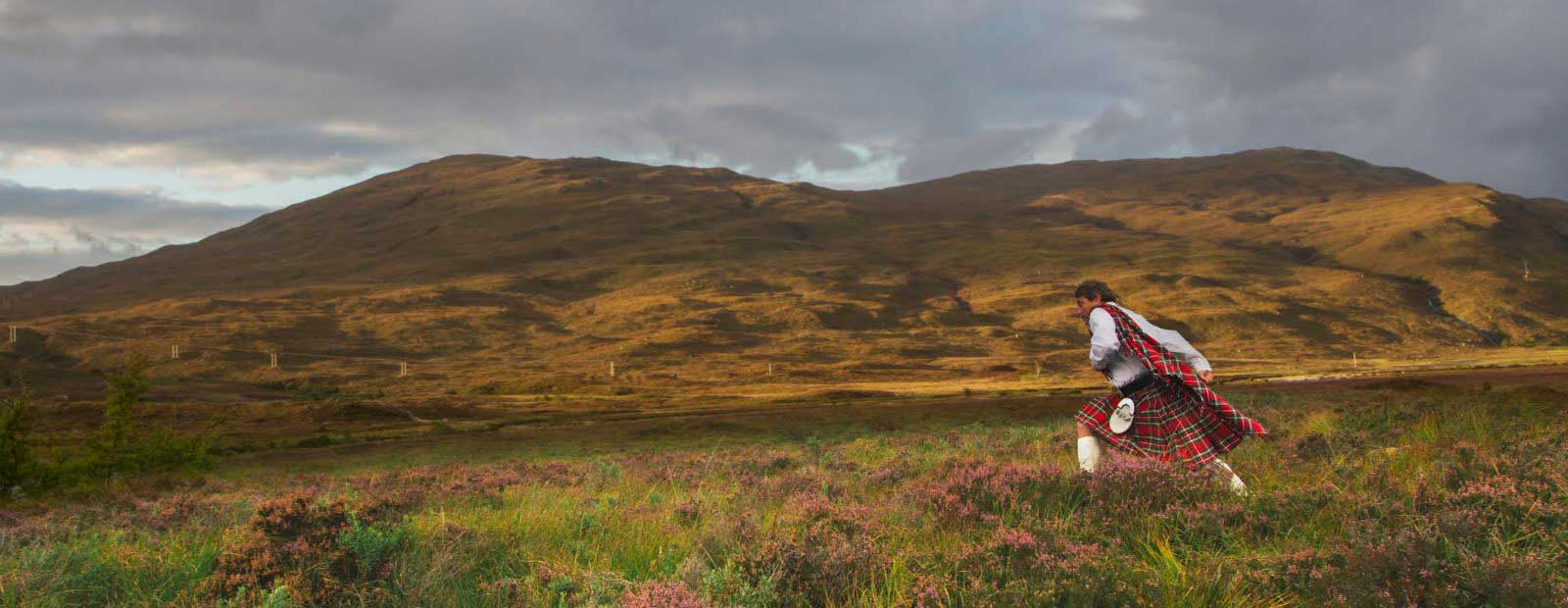
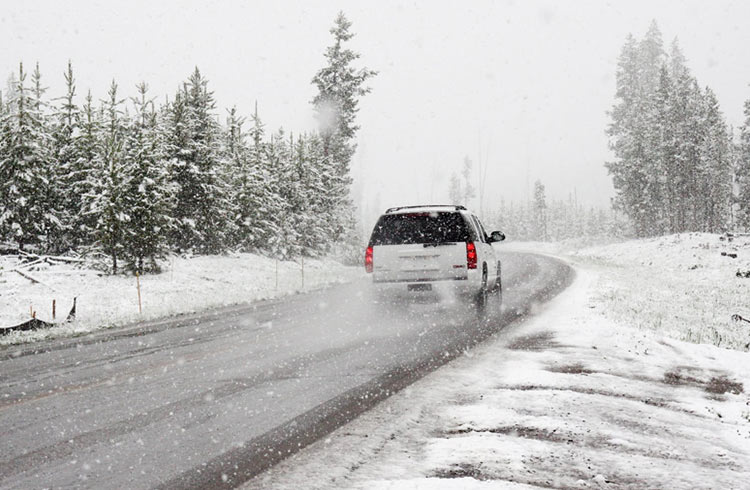
No Comments